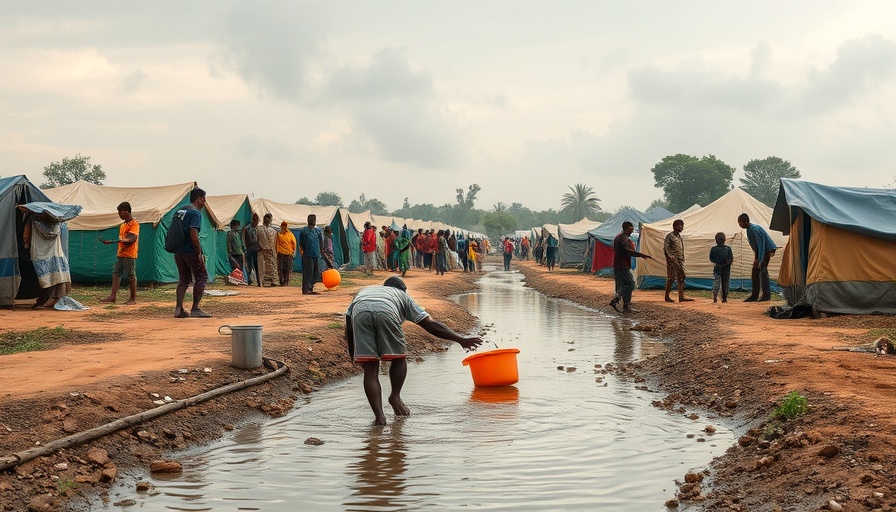
The Severity of the Cholera Crisis in Eastern and Southern Africa
The recent report from UNICEF unveils a dire situation with over 178,000 confirmed cholera cases and nearly 2,900 deaths across 16 countries in Eastern and Southern Africa since January 2024. With half of these cases occurring in children under 15, the urgency for intervention is apparent. South Sudan and Angola are noted as the epicenters of the outbreak, highlighting the necessity for both immediate and long-term strategies to combat this public health crisis.
Understanding the Contributing Factors
The cholera outbreak has been significantly exacerbated by disruptions in water, sanitation, and hygiene services affected by variable weather patterns, particularly floods and droughts. The facts disclosed by UNICEF reveal that approximately 174 million people are without basic hygiene facilities in their homes. As infrastructure crumbles under climate pressures, the risk for waterborne diseases, including cholera, increases dramatically, threatening not just health but socioeconomic stability as well.
Why This Matters: A Human Rights Perspective
The crisis reflects broader systemic issues regarding access to clean water—a fundamental human right. For many families, especially those with children in affected countries, the fight for safe drinking water is an everyday reality. The growing number of cholera cases is not merely a health statistic; it signifies increased vulnerability and inequalities affecting the communities that UNICEF and other humanitarian organizations aim to serve. The impact is felt at individual and community levels, raising questions about our global response to such humanitarian challenges.
Government and Stakeholder Responsibilities
UNICEF’s call to action for governments and stakeholders is crucial. Effective strategies must encompass increased funding for sustainable water management systems, political commitments that prioritize public health, and population resilience to climate changes. Investments not only in immediate health responses but also in long-term infrastructure resilience are vital. This prompts a discussion on the need for a community-driven approach to health which integrates local knowledge and technologies.
Innovative Solutions: The Role of Technology in Addressing Water Crises
To tackle such a multifaceted crisis, technological innovations could play a pivotal role. For instance, AI and IoT can bring about real-time monitoring of water quality, while blockchain could ensure transparent distribution of resources. The idea of smart cities where technology is harnessed for public health—including water quality monitoring and emergency response systems—could mitigate such outbreaks in the future.
Final Thoughts: How Can We Engage?
The public discourse surrounding cholera in Eastern and Southern Africa highlights the complex interplay between environmental issues, political will, and community health. Industry leaders, health professionals, and policymakers are called upon to be vigilant and proactive in their engagement. The challenge lies in integrating innovative solutions, ensuring funding mechanisms are robust, and prioritizing the voices of affected communities.
Urgent action is required—not just from governments but also from businesses and civil society. By actively participating in dialogues and planning innovative responses, we can contribute to reversing these alarming trends and pave a path towards healthier futures for all affected populations.
As industry leaders, now is the time to engage in shaping solutions through partnerships, investments in sustainable technologies, and community outreach programs that empower and protect vulnerable populations.
 Add Row
Add Row  Add
Add 




Write A Comment